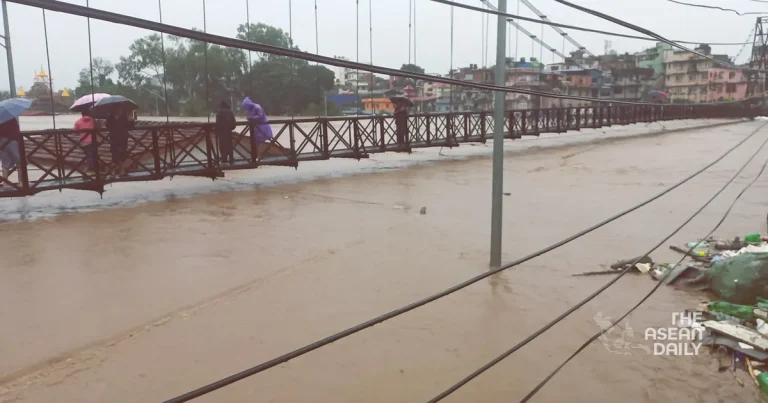29-9-2024 (KATHMANDU) Nepal finds itself in the grip of a severe weather crisis as relentless monsoon rains continue to batter the Himalayan nation, triggering widespread flooding and deadly landslides. In the past 24 hours alone, at least 10 people have lost their lives, with seven more reported missing, as the country’s infrastructure struggles to cope with the deluge.
The prolonged monsoon season, which typically begins its retreat by this time of year, has instead intensified, causing rivers across Nepal to swell beyond their banks. The result has been a cascade of disruptions to daily life, with roads submerged, bridges compromised, and transportation networks severely impacted.
Dan Bahadur Karki, a police spokesman, reported that landslides have obstructed highways at no fewer than 28 locations, necessitating urgent clearance operations to restore vital traffic arteries. The situation has left many communities isolated and vulnerable to further weather-related hazards.
Weather forecaster Binu Maharjan, based in the capital Kathmandu, attributes the unseasonable downpours to a stubborn low-pressure system lingering over parts of neighbouring India. Maharjan offered a glimmer of hope, suggesting that the rains might begin to abate by Sunday morning, though the immediate outlook remains grim.
“The central and eastern regions have borne the brunt of the deluge, with rainfall measurements ranging from a moderate 50mm to an extreme 200mm in some areas,” Maharjan elaborated. This volume of precipitation has overwhelmed urban drainage systems and natural watercourses alike.
The impact on air travel has been significant, with Rinji Sherpa, a spokesperson for Kathmandu airport, confirming that while international flights continue to operate, many domestic routes have faced disruption. This has further complicated relief efforts and stranded travellers across the country.
Kathmandu itself, nestled in a valley surrounded by hills, has not been spared. The capital’s streets and low-lying areas have transformed into impromptu waterways as rivers breach their banks, inundating homes and critical infrastructure. Authorities report that parts of the city have seen more than 200mm of rainfall, a figure that would challenge even the most robust urban planning.
Of particular concern is the Koshi River in the southeast, a waterway infamous for its annual flooding of India’s Bihar state. Officials report that the river is currently flowing at a staggering 450,000 cusecs, triple its normal rate of 150,000 cusecs. Ram Chandra Tiwari, the region’s senior administrator, warns that the river level continues to rise, posing an escalating threat to communities along its banks.




